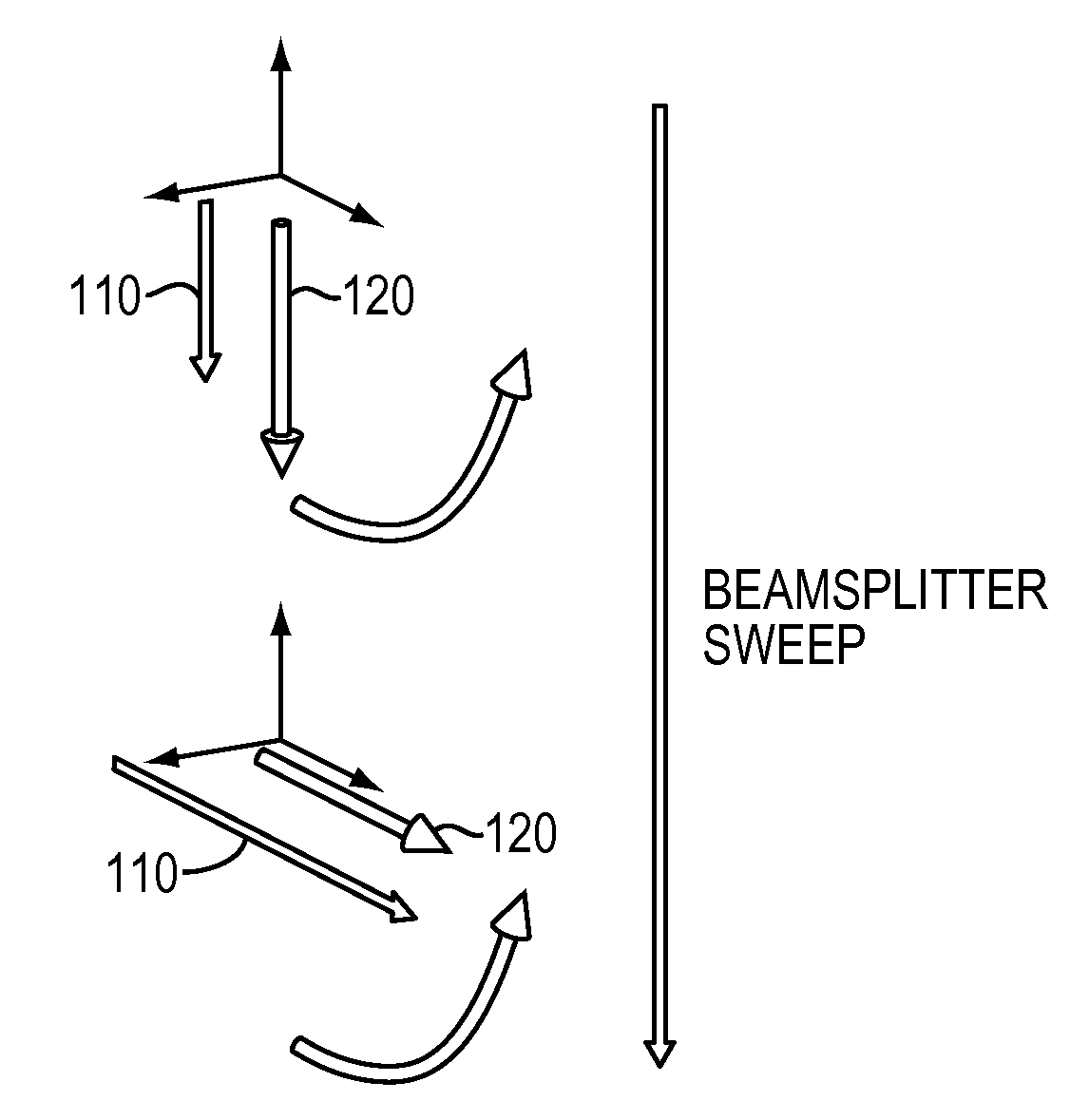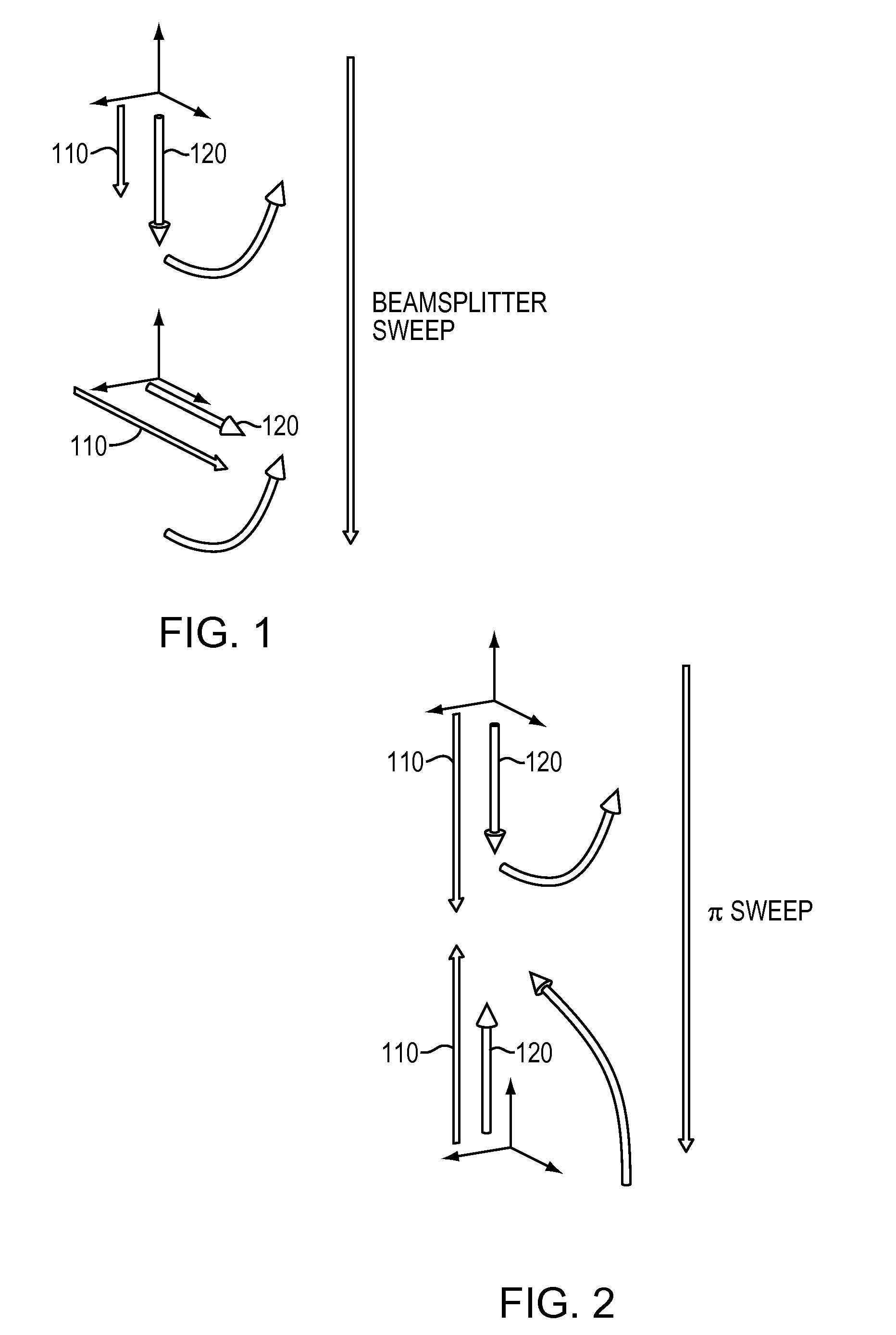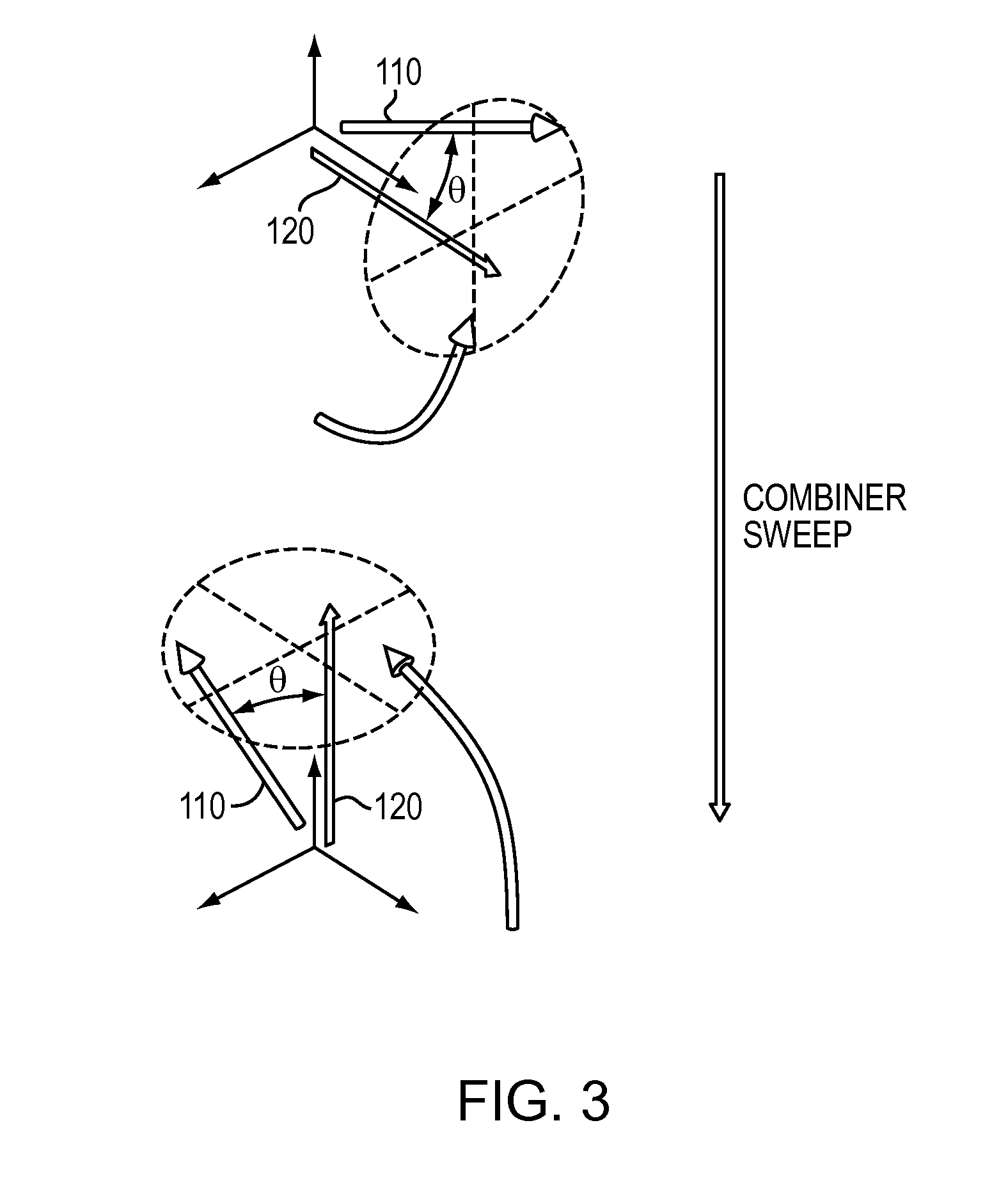Adiabatic rapid passage atomic beamsplitter using frequency-swept coherent laser beam pairs
- Summary
- Abstract
- Description
- Claims
- Application Information
AI Technical Summary
Benefits of technology
Problems solved by technology
Method used
Image
Examples
example 1
Two Sweep Interferometer Sequences
[0049]This example includes laboratory demonstration of atom interferometry with RCAP sweeps in a two-pulse interferometry sequence using the above-mentioned apparatus. Atom interferometry was done using two-photon transitions between the |F=3; mF=0 and |F=4; mF=0 hyperfine levels. The Raman beam was locked at 2.2 Gigahertz (GHz) above the single-photon resonance, and was passed through an electro-optic modulator (EOM) to create sidebands. Phase modulating the EOM at the hyperfine splitting frequency produced two carrier-sideband pairs, one of which drove the dominant Raman transition in our experiments. The modulated beam carried both Raman frequency components and was circularly polarized to ensure velocity insensitive (co-propagating) transitions. Finally, an arbitrary waveform generator controlled the pulse timing and frequency sweeps for the RCAP process.
[0050]FIG. 5A presents population transfer as a function of the deviation of the center fre...
example 2
Three Sweep Interferometer Sequence
[0053]This example demonstrates atom interferometry with RCAP sweeps in a three-event interferometry sequence with a velocity-sensitive (counter-propagating) Raman beam configuration. As discussed above, the apparatus described in Light pulse atom interferometry at short interrogation times, Butts et al., JOSA B 28, pp 416-421 (2011) was used. As was the case in Example 1, in this example, a Raman master laser was locked at 2.2 GHz above the single-photon resonance, and was passed through an electro-optic modulator (EOM) to create sidebands. Phase modulating the EOM at the hyperfine splitting frequency produced multiple sidebands in addition to the input laser frequency. The modulated beam was applied to two slave lasers, each tuned to principally amplify one of the frequencies required to form a Raman beam pair. The outputs of the slave lasers were applied to oppositely directed optical collimators, which produced counter-propagating Raman laser b...
PUM
 Login to View More
Login to View More Abstract
Description
Claims
Application Information
 Login to View More
Login to View More - R&D
- Intellectual Property
- Life Sciences
- Materials
- Tech Scout
- Unparalleled Data Quality
- Higher Quality Content
- 60% Fewer Hallucinations
Browse by: Latest US Patents, China's latest patents, Technical Efficacy Thesaurus, Application Domain, Technology Topic, Popular Technical Reports.
© 2025 PatSnap. All rights reserved.Legal|Privacy policy|Modern Slavery Act Transparency Statement|Sitemap|About US| Contact US: help@patsnap.com



